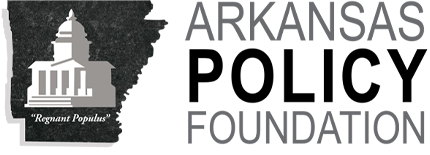(July 2023) Arkansas Gov. Sarah Huckabee Sanders; her predecessor, former Gov. Asa Hutchinson; and state legislators have reduced the income tax rate to 4.7% since 2015. The top state income tax rate was 7.0% a decade ago.
Some critics make class-warfare arguments to oppose the tax cuts. Others claim the state cannot afford them. Another argument making the policy rounds is that state surpluses used to reduce rates are one-time events.
Surpluses are Not One-Time Events
Past Policy Foundation research has noted national economic expansions tend to produce state revenue surpluses. A December 2013 memo published after the top rate was reduced from 7.0% to 6.9% noted, “The U.S.economy has been expanding since June 2009, and Arkansas state government recorded surpluses totaling more than a half-billion dollars in the last three fiscal years. These surpluses were $94 million (2010-11), $146 million (2011-12) and $300 million (2012-13). (2) The surpluses continued for most of the remainder of the decade. The state recorded surpluses of $191.6 million (2014-2015), $177.4 million (2015-2016), and $295 million (2018-2019). (3)
According to the National Bureau of Economic Research in Cambridge, Massachusetts, a recession occurred from February to April 2020. Yet fiscal stimulus led to another surplus: $369 million in FY 2019-2020. State revenues usually decline around NBER-identified recessions, with a slight lag.
Arkansas state government recorded larger surpluses post-recession. Surpluses totaled $946 million (2020-2021), $1.63 billion (2021-2022), and
$1.16 billion (2022-2023). The state is likely to report another surplus if the
U.S. economy remains in expansion. A recession would imply the opposite.
Importance of Coincident Indicators
The NBER uses a broader range of economic indicators than the GDP frequently cited by mass media. These are the four monthly coincident indicators: nonfarm payroll employment; industrial production; real personal income excluding transfer payments; and real manufacturing and trade sales. Indicators showed expansion in 2022 at a time when some economists forecast recession. The state of these coincident indicators is as follows: (4)
- Nonfarm payroll employment (expansion; last reading: June2023)
- Industrial production (contraction; June 2023)
- Real personal income (expansion, June 2023)
- Real manufacturing and trade sales (expansion, May 2023)
— Greg Kaza
Notes
- Policy Foundation research memo. “Business Cycles & Arkansas Income ” (March 2022) The memo examined three decades of income tax collections by fiscal year (FY 1991-92 to FY 2020-21)and found, “Income tax revenues increased in each expansion.” Collections fell only five times in the 30-year period, with declines occurring around three NBER-identified recessions. These were in 2001, 2007-2009, and 2020. They also fell in two fiscal years in expansion (2013-14, 2015-16).
- Policy Foundation research memo, “Tax Rates Can Be Cut Using Surplus ” (December 2013)
- “State’s $945.7M surplus in fiscal -21 highest ” Arkansas Democrat-Gazette. July 3, 2021
- Kaza, Greg. “U.S. economic expansion, year ” Talk Business. May 8, 2022. The column includes a discussion of the NBER Business Cycle Dating Committee’s use of GDP and the coincident indicators.









